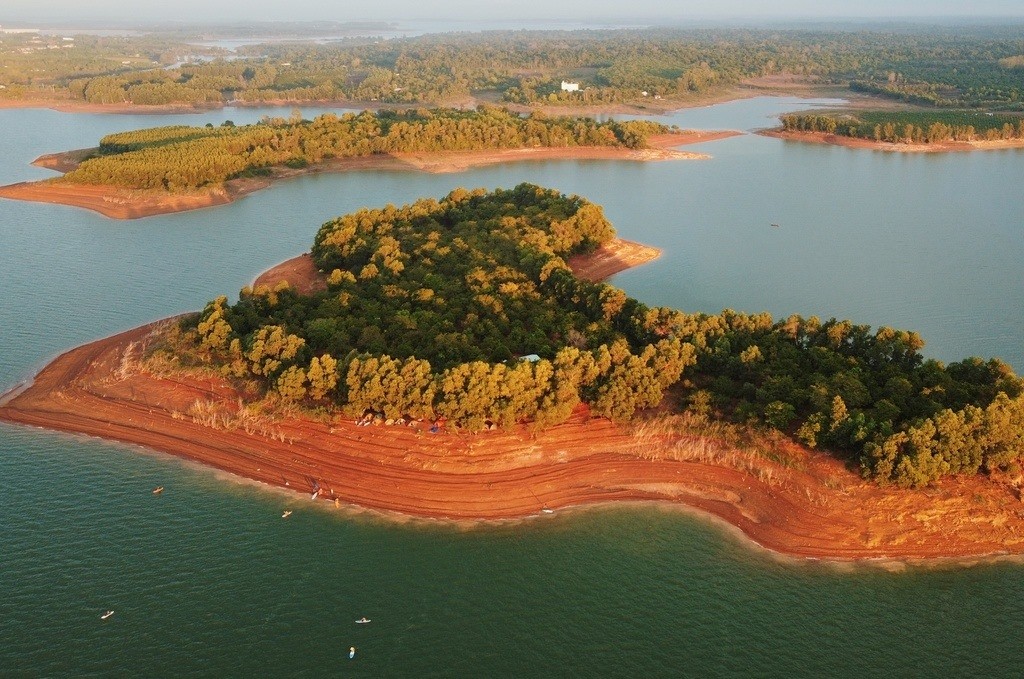Deputy Prime Minister Tran Hong Ha signed Decision No. 1352/QD-TTg on November 8, 2024, approving the National Biodiversity Conservation Plan for 2021-2030, with a vision to 2050. One of the plan's key objectives is to increase the total area of Viet Nam’s nature reserve system to 6.6 million hectares.
The overarching goal of the plan is to expand, restore, and ensure the integrity and connectivity of natural ecosystems; to effectively manage and conserve wildlife species and valuable genetic resources; and to establish and develop a comprehensive system of nature reserves, biodiversity corridors, biodiversity conservation facilities, high biodiversity areas, key ecological landscapes, and critical wetlands. This initiative aims to support climate change adaptation and promote the country's sustainable development.
Establishing 61 new nature reserves
Under the recent decision, Viet Nam will expand, upgrade, and improve the management effectiveness of its nature reserve system. The plan includes transitioning 178 existing reserves (of which seven will be reclassified and 27 expanded) and establishing 61 new reserves, bringing the total area of the national reserve system to approximately 6.6 million hectares.
The plan also focuses on strengthening and developing biodiversity conservation facilities, corridors, and critical wetlands. It will transition 13 existing biodiversity conservation facilities, certify nine more, transition three existing biodiversity corridors, and establish seven new corridors. Additionally, it will designate 10 wetlands of national importance.
A network of high-biodiversity areas and critical ecological landscapes will also be developed, consisting of 22 high-biodiversity areas covering about 2 million hectares and 10 critical ecological landscapes totaling around 4 million hectares.
By 2050, the goal is for critical natural ecosystems, endangered species, and valuable genetic resources to be effectively restored and conserved. Biodiversity and ecosystem services will be sustainably managed, providing essential benefits for socio-economic development, ensuring environmental security, and actively supporting climate change adaptation and sustainable national development.
 A corner of Dong Nai province's cultural and natural reserve
A corner of Dong Nai province's cultural and natural reserve
Establishing 8 ecological regions for biodiversity conservation
Viet Nam’s biodiversity conservation plan for 2021-2030 is oriented around eight ecological regions across the country: the Northeast, Northwest, North Central, South Central, Central Highlands, Southeast, Red River Delta, and Mekong Delta regions.
Implementing remote sensing technology in conservation
The government has proposed eight critical strategies for implementing this conservation plan: mechanisms and policies, training and capacity building, finance and investment, public awareness, international cooperation, organizational execution, and monitoring.
A primary focus for Viet Nam is advancing scientific research on biodiversity conservation and sustainable use. This includes developing models for breeding and reintroducing wildlife, conserving endemic and endangered species, preventing the decline of species at risk of extinction, and promoting effective ecotourism models. Viet Nam also aims to adopt and transfer new technologies for nature and biodiversity conservation.
Notably, Viet Nam will increase the application of remote sensing technology and geographic information systems (GIS) in planning and monitoring the conservation plan and its targets. Community-based conservation models will also be developed and scaled up to promote successful local conservation initiatives.
The country will enhance awareness and legal education on biodiversity conservation, especially targeting management officials and communities in high-biodiversity areas and critical ecological landscapes.
Viet Nam will actively participate in and comply with international treaties on biodiversity conservation while exploring new agreements, initiatives, and forums to safeguard national interests. International cooperation will also focus on cross-border conservation management, strengthening efforts to curb illegal wildlife trade.
To support climate-resilient biodiversity conservation, the plan emphasizes assessing and forecasting climate change impacts on biodiversity, developing adaptive conservation models, and proposing climate-adaptive biodiversity conservation solutions.